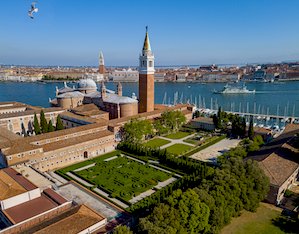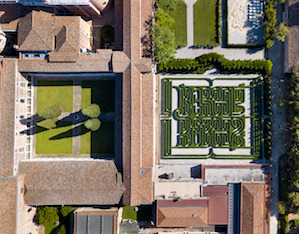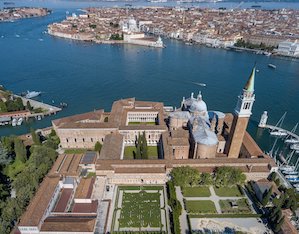With more than 3,000 boxwood plants, this is a “green masterpiece” full of cultural and spiritual meanings paying homage to the poetics of the great Argentinian writer Jorge Luis Borges.
The maze was constructed by Fondazione Giorgio Cini, in collaboration with Fundación Internacional Jorge Luis Borges. Designed by English architect Randoll Coate it is intended as a homage of the city of Venice to the great writer from Buenos Aires, commemorating the 25th anniversary of his death (2011). Labirinto Borges is the reconstruction of the garden-maze that Coate had designed, also in honour of Borges, in 2003 in Mendoza. Composed of 3,250 boxwood plants that spell out the poet’s name as if it were written on the pages of an enormous open book, covering a space of 2,300 square metres, it is located in the area behind the “chiostro del Palladio” and the “chiostro dei Cipressi” in the Benedictine complex on the island of San Giorgio where the Foundation has its headquarters. Along the 1,150-metre-long itinerary, symbolic objects that were dear to the writer and found in many of his works can be seen: the mirrors, two hourglasses, the walking stick, the tiger, an enormous question mark and the initials of Borges’ widow, Marìa Kodama. The creators wanted this place to be enjoyed by visually impaired persons too, in remembrance of the blindness that Borges suffered. Therefore a handrail on with the story of Eljardín de senderosque se bifurcan written in Braille leads to the exit of the maze. The theme of the maze, an enigmatic and mysterious place, just like Venice, a city the poet loved for its history and the natural maze-like structure of its canals, features in two stories that the writer added in 1952 to the short story collectionThe Aleph (Abenjacán el Bojarí, muerto en su laberinto e Historia de los dos reyes y los dos laberintos).




